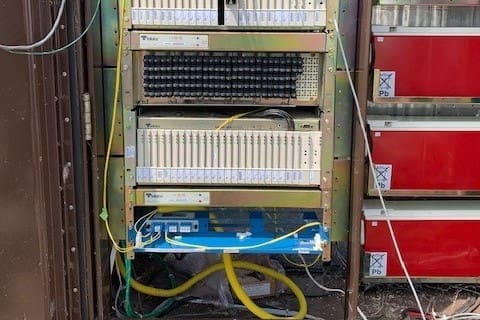As bandwidth demands continue to grow, Network Operators continue to be challenged by broadband exhaustion. This is a tough problem to solve since many serving areas do not have enough spare fiber to backhaul high speed internet traffic. Installing new fiber is disruptive, resource intensive and expensive – at the same time, Service Provider’s construction budgets are tight. Making matters worse is the inevitable subscriber loss when customers experience poor network performance and switch their business to a competitor.
Why is this important?
Broadband exhaust has a significant negative impact on revenue. Not being able to serve their customer base with fast and reliable data services, means Service Providers are helpless in stemming the outflow of revenue from the inevitable loss of customers. These losses can be measured in thousands of dollars locally, and millions of dollars nationally.
How can we help?
The Tellabs 1000 Multiservice Access Platform (MSAP) connects millions of business and residential customers. Its footprint typically reaches deep into rural America, crosses the digital divide and extends into targeted areas of eligibility for Connect America Funds. These existing Tellabs 1000 MSAP systems, are already fully operationalized across major service providers networks, and are ideal candidates for easy, low cost, card-based, broadband upgrades. Used in conjunction with Wave Division Multiplexing (WDM) systems, and the solution becomes even more attractive.
Tellabs can provide a turn-key solution for Service Providers that combines both CWDM, and the T1000, for economic relief of broadband exhaustion. This is accomplished by identifying the T1000 systems that are utilizing fiber to transport voice and data services across any optical interface (e.g. OC3, OC12, Gigabit Ethernet). These systems are candidates for the addition of a passive optical multiplexing solution that provides multiple wavelengths from the Central Office (CO) to the T1000 remote terminal. With this CWDM solution in place, existing fiber cable can now support additional backhaul transport to resolve bandwidth exhaust.
With broadband capacity unlocked, and by utilizing the passive CWDM solution, the T1000 system can be economically upgraded as follows:
- Leave existing fiber-based transport as is (e.g. OC3, OC12) for voice and business specials – transport on a dedicated CWDM wavelength
- Optimize broadband service together on dedicated shelves and off-load high speed data traffic directly to Gigabit Ethernet Transceiver 222 (GbE222) plug-in cards connected to a dedicated CWDM wavelength.
- Aggregate all the GbE222 uplinks to the 10 Gigabit Ethernet 226 (GbE226) – transport on a dedicated CWDM wavelength.
With these options available, additional broadband xDSL service cards (e.g. VDSL2 6+6B) can be added to support higher speeds through bonding, and more customers through the addition of more high speed subscriber ports. This combination of higher speeds, and additional customer capacity, helps stem the erosion of the customer base and more importantly, results in additional revenue for the Network Operator.
You can get additional details about how a major Network Operator optimizes fiber with Tellabs 1000 MSAP GbE226 combined with CWDM system by reading this news release. You can also stay connected with us on our social media channels, such as Facebook, LinkedIn, Twitter, Instagram and YouTube.

